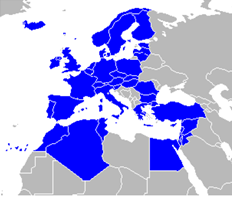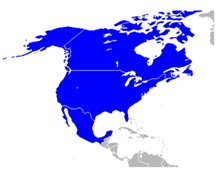优惠原产地规则研究(连载二)
《优惠原产地规则研究》
- 南京分会 邹锐锐
第二单元 地域性原则
优惠原产地规则通过鉴别原产于自由贸易区成员国的产品和原产自于自由贸易区外的产品,来确定产品的经济国籍。在确定原产地的过程中,通常有三大原则(规则)需要遵循,并称为原产地确定过程中的三大原则。它们是: 地域性原则、原产地实体性规则(规定产品获得原产资格所需满足的总体条件和要求)、以及原产地程序性规则(规定原产地资格认证和核查的条款和海关程序)。本单元将详细介绍地域性原则。
地域性原则要求产品的生产过程必须在自由贸易区内“不受中断”地进行。产品的原产状态必须在自由贸易区内“不受中断”地得以实现。任何在自由贸易区外所实施的生产和操作将导致以下后果:一是货物将失去其原有的优惠原产资格;二是本已获得优惠原产资格的中间产品(零部件)将失去其原产资格。将某一中间产品出口至自由贸易区外将会导致其丧失本已在自由贸易区内获得的原产资格。因此,地域性原则成为享受优惠待遇的先决条件。在生产加工过程中被出口至自贸区之外的货物在其复进口至自贸区时必须被完全视为非原产货物。货物出口之前原本在自贸区内进行生产的部分不能被用于原产地确定。
地域性原则的根本宗旨在于能够将赋予原产资格的生产加工过程控制在自贸区内,从而简化原产地的判定流程,使得判定流程更加透明。同时,生产商为提供原产地证明通常需要记录发生在自贸区内外的各种生产流程,如果缺少地域性原则,自贸区成员国在判定原产资格时则需要评估上述发生在多个国家中的生产流程(此时往往需要通过他国机构协助方能监控发生在自贸区外的生产流程),大大增加原产地认证和核查的工作难度。
世界各国的优惠原产地立法中均规定或者体现了地域性原则。例如:在欧盟的原产地立法通过专门章节解决与地域性原则有关的各种问题,而北美自由贸易区协定则仅通过第401条(该条款具体规定获得原产资格的条件)来体现地域性原则。
欧盟模式中的地域性原则
在世界各国的优惠原产地立法中,最为详尽和明确地规定地域性原则的当属欧盟与其自贸区伙伴国签订的欧盟模式的自由贸易协定。欧盟模式中的地域性原则要求确定原产地时所需要考虑的生产过程不能够被来自于欧盟及其自贸区伙伴国领土之外的加工工序所干扰。欧盟模式下的优惠原产地立法通常在第三章“地域性要求”(TITLE III TERRITORIAL REQUIREMENTS)中包含有3个与地域性原则有关的条款,分别是:第12条“地域性原则”(ARTICLE 12 PRINCIPLE OF TERRITORIALITY),13条“直接运输”(ARTICLE 13 DIRECT TRANSPORT)和14条“展览品”(ARTICLE 14 EXHIBITIONS)。下文将以《关于泛欧-地中海优惠原产地规则的区域性条约》为例,详细解释欧盟模式中的地域性原则。
TITLE III TERRITORIAL REQUIREMENTS Article 11 Principle of territoriality 第11条之前的10个条款规定了确定产品原产地的各种实体性规则,而第11条则注重于原产地规则中的地域性限制。 1. Except as provided for in Article 2(1)(c), Article 3 and paragraph 3 of this Article, the conditions for acquiring originating status set out in Title II shall be fulfilled without interruption in the exporting Contracting Party. 第2条和第3条列明了泛欧-地中海累积规则适用的国家和领土范围,规定了在泛欧-地中海累积区域产品获得优惠原产资格的条件。第11条一开始就重申了遵守第2条和第3条的必要性,除了在一些特殊情况下,对于产品的加工和生产必须在自贸区内进行。 2. Except as provided for in Article 3, where originating goods exported from a Contracting Party to another country return, they shall be considered as non-originating, unless it can be demonstrated to the satisfaction of the customs authorities that: (a) the returning goods are the same as those exported; and (b) they have not undergone any operation beyond that necessary to preserve them in good condition while in that country or while being exported. 第2款适用于货物被出口至自贸区外并再次返回出口国的情形(无论何种原因)。上述货物将被认为是非自贸区原产货物。但是,如果能够向海关证明返回的货物与离开自贸区的货物一致,并且货物在离开自贸区的过程中没有发生任何形式的改变(为保持货物良好性状而必要的工序除外),则货物在其返回时可被认为是原产。若无法证明,则货物将被判定为非原产。 3. The acquisition of originating status in accordance with the conditions set out in Title II shall not be affected by working or processing done outside the exporting Contracting Party on materials exported from the latter Contracting Party and subsequently re-imported there, provided: (a) the said materials are wholly obtained in the exporting Contracting Party or have undergone working or processing beyond the operations referred to in Article 6 prior to being exported; and (b) it can be demonstrated to the satisfaction of the customs authorities that: (i) the re-imported goods have been obtained by working or processing the exported materials; and (ii) the total added value acquired outside the exporting Contracting Party by applying the provisions of this Article does not exceed 10 % of the ex-works price of the end product for which originating status is claimed. 第11条第3款指出尽管有第2款的规定,但在极其特殊的情况下,仍可对在泛欧-地中海累积区域外对货物进行生产和加工,而最终产品不丧失原产资格。条件是: 出口至泛欧-地中海累积区域外的货物在出口前已经获得原产资格。 必须证明附进口的货物由此前出口至泛欧-地中海累积区域外的货物生产加工而成。 出口至泛欧-地中海累积区域外进行加工所获得的增值部分不得超过附进口货物产品出厂价格的10%。 若上述任一条无法满足,复进口的货物将被视为非原产。
4. For the purposes of paragraph 3, the conditions for acquiring originating status set out in Title II shall not apply to working or processing done outside the exporting Contracting Party. However, where, in the list in Annex II, a rule setting a maximum value for all the non-originating materials incorporated is applied in determining the originating status of the end product, the total value of the non-originating materials incorporated in the territory of the exporting Contracting Party, taken together with the total added value acquired outside this Contracting Party by applying the provisions of this Article, shall not exceed the stated percentage. 根据第11条第3款,在确定复进口货物产地时,第2章中的条款将不适用于在出口协定国外所进行的生产和加工。但是如果该货物适用附件二(特定原产地规则)清单中所设定的最大非原产成分百分比规则,则该货物在出口成员国内所使用的非原产原材料和该货物在出口成员国外所进行的生产和加工的增值部分必须累加计算,并不得超过规定的百分比。 5. For the purposes of applying the provisions of paragraphs 3 and 4, ‘total added value’ means all costs arising outside the exporting Contracting Party, including the value of the materials incorporated there. 6. The provisions of paragraphs 3 and 4 shall not apply to products which do not fulfil the conditions set out in the list in Annex II or which can be considered sufficiently worked or processed only if the general tolerance fixed in Article 5(2) is applied. 若最终产品通过适用第5条第2款的容忍规则来获得原产资格,则第11条第3款所允许的10%增值将不再适用。第11条第3款的10%增值规则不可以和容忍规则中的10%容忍幅度同时适用。 7. The provisions of paragraphs 3 and 4 shall not apply to products of Chapters 50 to 63 of the Harmonized System. 第11条不适用于编码协调制度第50至第63章中所包含的纺织品。 8. Any working or processing of the kind covered by the provisions of this Article and done outside the exporting Contracting Party shall be done under the outward processing arrangements, or similar arrangements. 在现代化生产方式中,有时对产品的特殊加工或处理无法在自贸区内进行,必须被送往另外的国家进行。第11条包含了这些特殊情况。但是第11条仅适用于被出口至自贸区外并返回出口国的货物。本条不适用于出口国和进口国不一致的货物。第11条所涉及的出口成员国外所进行的生产和加工必须有外发加工协议或者类似协议。
Article 12 Direct transport 第12条旨在确保货物在协定成员国间运输时得到海关监管,即使运输必须离开泛欧-地中海累积区域外并进行短暂停留。 规定直接运输的原因是为了确保所有的生产和加工在协定成员国的领土内进行,防止货物违反直接运输条件以享受优惠待遇。 货物在互为邻国、有共同边界的协定成员间直接运输。对这种直接运输没有任何海关监管上的问题,此时货物在两国边界所组成的自贸区内。 货物在协定成员国间通过泛欧-地中海累积区域中的其他国家间接运输。上述情况对于海关监管来说也不会造成太大问题,因为运输仍然在自贸区内进行。 货物在协定成员国间通过泛欧-地中海累积区域外的其他国家间接运输。此时货物在运输有可能经过一个或多个非自贸区成员国。此时对于出口商将会加以严格的规定要求其遵守,同时在海关需要时随时提供证明文件。 在上述所有情况下,货物可以用任何运输方式进行运输。在上述前两种情况下,货物运输通常有单一的运输单据可以作为证明。在第三种情况下可能有困难产生。 在第三种情况下,必须满足下列条件: 有正确文件证明的单次运输货物可以享受优惠待遇。 上述转运方式下的货物必须总是处于海关的监管下。货物在运输过程中可以进行装卸货或者为保持货物良好性状而必要的工序。这些工序必须在作业地海关的监管下进行。
对于任何发生在自贸区外的转运和临时性仓储,都必须证明货物在到达进口成员国时的状态与货物离开出口成员国时的状态一致。
上述证明可以是第12条第2款所列的三种形式的证明中的任何一种。如果不能够提供单一运输单据(联运提单),转运国海关必须提供书面证明,证明货物在转运地全程处于海关监管之下。上述证明必须包含第2款(b)项所列之内容,包括:货物的详细描述;货物装卸的日期;船名或者其他运输工具名称;货物在转运国的状态等。简而言之,上述证明必须详细记载货物在转运国的流动情况以及接受海关监管的情况。这种书面证明通常被称为未加工证明。
如果联运提单和未加工证明均无法提供,还可以提供其他证明材料以享受优惠。但此时很难保证这些材料(例如:商业发票等)能够充分证明货物满足第12条所规定的直接运输。 1. The preferential treatment provided for under the relevant Agreement shall apply only to products satisfying the requirements of this Convention which are transported directly between or through the territories of the Contracting Parties with which cumulation is applicable in accordance with Article 3. However, products constituting one single consignment may be transported through other territories with, should the occasion arise, trans-shipment or temporary warehousing in such territories, provided that they remain under the surveillance of the customs authorities in the country of transit or warehousing and do not undergo operations other than unloading, reloading or any operation designed to preserve them in good condition. Originating products may be transported by pipeline across territory other than that of the Contracting Parties acting as exporting and importing parties. 2. Evidence that the conditions set out in paragraph 1 have been fulfilled shall be supplied to the customs authorities of the importing Contracting Party by the production of: (a) a single transport document covering the passage from the exporting Contracting Party through the country of transit; or (b) a certificate issued by the customs authorities of the country of transit: (i) giving an exact description of the products; (ii) stating the dates of unloading and reloading of the products and, where applicable, the names of the ships, or the other means of transport used; and (iii) certifying the conditions under which the products remained in the transit country; or (c) failing these, any substantiating documents.
Exhibitions 1. Originating products, sent for exhibition in a country other than those referred to in Article 3 with which cumulation is applicable and sold after the exhibition for importation in a Contracting Party, shall benefit on importation from the provisions of the relevant Agreement provided it is shown to the satisfaction of the customs authorities that: (a) an exporter has consigned these products from a Contracting Party to the country in which the exhibition is held and has exhibited them there; (b) the products have been sold or otherwise disposed of by that exporter to a person in another Contracting Party; (c) the products have been consigned during the exhibition or immediately thereafter in the state in which they were sent for exhibition; and (d) the products have not, since they were consigned for exhibition, been used for any purpose other than demonstration at the exhibition. 2. A proof of origin shall be issued or made out in accordance with the provisions of Title V and submitted to the customs authorities of the importing Contracting Party in the normal manner. The name and address of the exhibition shall be indicated thereon. Where necessary, additional documentary evidence of the conditions under which they have been exhibited may be required. 3. Paragraph 1 shall apply to any trade, industrial, agricultural or crafts exhibition, fair or similar public show or display which is not organized for private purposes in shops or business premises with a view to the sale of foreign products, and during which the products remain under customs control. |
地域性原则的例外
上文中说到,所有自贸协定中都不同程度地规定了地域性限制(地域性原则),要求协定中所规定的原产货物必须:在自由贸易区内获得或者在自由贸易区内经过充分加工(或者实质性改变)。产品的生产过程必须在自由贸易区内“不受中断”地进行。出口至自贸区外随后又复进口至自贸区内的货物将被视作非原产,同时货物在出口前在自贸区内所经过的加工工序(包括当时赋予原产资格的工序)将不被考虑。
然而,在一些原产地立法(例如欧盟模式的原产地立法)中存在着地域性原则的例外情况,允许在某些情况下,在自贸区外进行的有限加工不影响原产地判定或者能够维持被运往自贸区外的产品的原产资格。原产地立法中会对上述例外设定一些先决条件。例如:需要向海关机构证明:一、运往自贸区外的货物和之后复进口的货物完全一致。二、货物没有经过任何加工工序(除了为保持货物良好性状而必要的工序)。又如:如果在自贸区外对出口货物进行了有限的加工和生产,上述加工生产在自贸区外产生的增值部分不能超过一定的比例。这些例外被称为“地域性原则的减损”。
直运规则/转运
优惠原产地规则中包含直运规则的条款旨在确保运抵进口国的货物和离开出口国时的货物完全一致。直运规则的目的是为了降低享受自由贸易协定优惠待遇的货物在运输过程中被操纵[1]的可能性。直运规则从本质上来说并非判定原产地的规则,而是为了防止原产货物在运输途中发生规避行为以及违规操作而设定的行政规则。
直运规则在某些情况下会十分严格,要求货物在出口国和进口国之间进行直接运输。在另外一些情况下相对宽松,允许通过非协定成员国进行转运或者间接运输,这主要是因为有时由于地理原因,直接运输不可能实现或者从经济上成本过高。
在某些原产地立法中(例如欧盟模式的原产地立法)通常预设严格的海关监管条款以确保享受优惠待遇的货物在海关的监管下从自贸区一协定国领土到达另一协定国领土。 即使货物的运输必须经过中转或者从第三国转运,海关也要能够随时掌握货物的情况。也有一些原产地立法中(例如北美自贸区协定)并没有明确规定海关需要对通过第三国转运的货物进行监管。
欧盟模式下的直运规则
欧盟原产地规则通常在第13条规定直运规则,规定原产货物必须在自贸协定成员国间进行运输。同时规定原产货物可以通过欧盟-地中海累积体系的参加国进行运输。如果货物经过其他国家进行转运,则需要满足严格的条件:禁止在转运和仓储过程中对货物进行加工(货物的装卸和为保持货物良好性状所进行的工序除外);货物需要在转运国受到海关机构的监管;需要提供联运提单等佐证材料以显示货物转运路线;需要提供未加工证明。
北美自贸协定中的转运规则
北美自贸协定在第411条“转运”中规定当货物在北美自贸协定成员国之外进行了除货物的装卸和为保持货物良好性状所需工序之外的加工时,即丧失原产资格。和欧盟模式相比,北美自贸协定中的转运规则有两个显著特点:一、北美自贸协定的第411条“转运”中“含蓄地“表达了地域性原则,并不像欧盟模式中直接以明确的条款规定地域性原则。第411条规定:除装卸或为保持货物良好性状或将货物运输至一成员方领土所必须的工序外,若货物在协定各方领土外进行了生产或者进一步加工,则尽管货物进行了满足第401条要求的生产加工,也将不被视为原产货物。(A good shall not be considered to be an originating good by reason of having undergone production that satisfies the requirements of Article 401 if, subsequent to that production, the good undergoes further production or any other operation outside the territories of the Parties, other than unloading, reloading or any other operation necessary to preserve it in good condition or to transport the good to the territory of a Party.)二、北美自贸协定中的转运规则并没有规定严格的直接运输的条件,也没有规定货物运输过程中的海关监管。事实上北美自贸协定中并没有直运规则。这是因为欧盟自贸区和北美自贸区有着截然不同的地理分布。在欧盟模式中,自贸区的成员国和非成员国错综复杂地分布在欧洲大陆,构成了”补丁式”的自贸区体系。这使得欧盟模式的原产地规则很有必要从一开始就制定严格的直运规则条款保持自贸区的完整性,排除可能的不具有原产资格的货物以转运和间接运输的方式通过非成员国进入自贸区。


欧洲地图和北美地图
展品
自由贸易协定中的优惠待遇原则上是给予满足以下条件的货物的:
满足了自由贸易协定中的原产地规则,且在自由贸易协定成员国间直接运输(在某些条件下,货物可以通过非成员国进行转运,同时不丧失原产资格(如:直运规则))。
自由贸易协定项下的货物可能被运输至非成员国(第三国)参加贸易、工业或者其他行业展览,并在展会上销售至成员国。若根据直运规则,展品必须被运回出口协定国,然后再运输至进口协定国。为避免上述复出口,自由贸易协定中通常含有针对于展览品的特定规则。当展览品在展会中被销售给自贸协定另一成员国的买方时,展览品规则允许展览品可以从举办展览的第三国直接运输至买方所在的成员国。可见,展览品规则也是地域性原则(直运规则)的例外。
欧盟模式中的展览品规则
欧盟模式的原产地规则中通常在第14条规定展览品规则,该规则构成了对于欧盟模式原产地规则第13条“直运规则”的例外。根据直运规则,在第三国展览中销售的原产货物若被从第三国运往买方所在的协定成员国,将失去其原产资格而丧失优惠待遇。展览品若需要享受优惠,必须在展览后运回其生产国(自贸协定成员国),再从那里运输至买方所在的协定成员国。
展览品规则的条款规定在某些情形下,参展货物可以直接从展会所在的第三国运输至协定成员国而不丧失优惠待遇。这些情形包括:
1. 展览品必须满足原产地规则,为原产货物。
2. 展览品必须从自贸协定一成员国运至展会所在第三国且在展会期间始终处于海关监管之下。
3. 展览品必须销售给自贸协定另一成员国的买方;
4. 展览品必须在展会中或者展会后立即“毫无改变”地运往另一成员国(毫无改变是指对展览品不得进行任何形式改变、加工,展览品与其离开自由贸易区时的状态保持一致,展览品除了用作展出外不得用于其他任何目的。)
值得注意的是:欧盟模式的展览品规则不适用于在企业、商铺中进行的私人展览中的展览品。 欧盟模式的展览品规则第三款规定:本条第一款适用于任何贸易、工业、农业或者其他行业的展会、交易会或者其他类似的公共展出或演示。上述展会不得为出于私人目的在企业、商铺中组织的旨在销售外国产品的活动。(Paragraph 1 shall apply to any trade, industrial, agricultural or crafts exhibition, fair or similar public show or display which is not organized for private purposes in shops or business premises with a view to the sale of foreign products, ...)
北美自贸区的展览品规则
上文中说到展览品规则是对于直运规则的一种例外。
北美自贸区原产地规则中并没有规定直运规则。北美自贸协定第411条的“转运”中禁止货物在北美自贸协定成员国之外进行了除货物的装卸和为保持货物良好性状所需工序之外的任何加工。这意味着北美自贸区原产地立法中并没有否定运往自贸区外第三国参展的并销售给自贸区成员国的原产产品的优惠待遇。因此,没有并要专门规定“展品”条款。
东盟自贸区模式下的展品规则
东盟模式中的展品规则规定在《东盟货物贸易协定》附件八《原产地签证操作程序》中的第22条中。
Rule 22 Exhibition Goods 1. Goods sent from an exporting Member State for exhibition in another Member State and sold during or after the exhibition for importation into a Member State shall be granted preferential treatment accorded under this Agreement on the condition that the goods meet the requirements as set out in Chapter 3 of this Agreement, provided that it is shown to the satisfaction of the relevant Government authorities of the importing Member State that: (a) An exporter has dispatched those goods from the territory of the exporting Member State to the Member State where the exhibition is held and has exhibited them there; (b) The exporter has sold the goods or transferred them to a consignee in the importing Member State; (c) The goods have been consigned during the exhibition or immediately thereafter to the importing Member State in the state in which they were sent for the exhibition. 2. For the purposes of implementing paragraph 1, the Certificate of Origin (Form D) shall be provided to the relevant Government authorities of the importing Member State. The name and address of the exhibition must be indicated. The relevant Government authorities of the Member State where the exhibition took place may provide evidence together with supporting documents prescribed in Rule 21(d) for the identification of the products and the conditions under which they were exhibited. 3. Paragraph 1 shall apply to any trade, agricultural or crafts exhibition, fair or similar show or display in shops or business premises with the view to the sale of foreign goods and where the goods remain under customs control during the exhibition. |
展品必须满足东盟自贸区原产地规则,符合东盟原产条件。
1. 东盟成员国中的出口方将展品运输至另一成员国境内参加展览;
2. 展品在参展过程中或者参展后立即被“原封不动地”销售给东盟成员国中的进口方;
3. 展览是指任何在企业、商铺中进行的贸易、农业或者其他行业的展会、交易会或者其他类似的展出或演示。
与欧盟模式不同的是,东盟模式的展品规则设定了更为严格的限制,具体体现如下:
将展览举办国限定在东盟自贸区成员国范围内,而不是自贸区外的“第三国”。也就是说,展览品必须在东盟自贸区内流转。从这种意义上来看,东盟模式的展品规则其实是对地域性原则的遵守而非突破。同时,这样的限制由于不涉及非成员国,因此各成员海关能够更方便地监控展品的流动。第22条展品规则第2款规定:为实施展品规则,须向进口成员国相关政府部门提交原产地证书。展会的名称和地址须显示在证书中。为检验展品及其状态,举办展会的成员国的相关政府部门可提供相关证明及其他第22条第4款所需要的相关证明文件[2]。
Outward Processing (OP) is the term used to describe a duty relief procedure established under Council Regulation (EEC) No. 2913/92 and implementing Commission Regulation 2454/93 (amended). It allows goods to be exported outside the European Union (EU) for processing or repair and then re-imported to the EU with relief granted from import duties on the basis of the content of EU goods in the final product. Outward processing enables businesses to take advantage of cheaper labour costs outside the European Community, while encouraging the use of Community produced raw materials to manufacture the finished products. Goods may be also temporarily exported to undergo processes not available within the Community.
[1] 操纵包括:对产品进行再加工、将产品中混入其他无法享受优惠待遇的产品等。
[2] 22条第4款所需要的相关证明文件是指能够证明产品满足《东盟货物贸易协定》第32条直运规则第2款(b)项规定的证明文件。《东盟货物贸易协定》第32条直运规则第2款(b)项规定:产品在通过出口和进口成员国之外的一个或者多个成员国转运的情况下(在参展模式下,即指展品从出口成员国通过举办展会的成员国转运至进口成员国),须证明:产品的转运是出于地理原因或者纯粹出于运输要求的合理转运;产品在转运过程中为进入贸易及消费环节;货物没有经过任何除为保持货物良好性状而必要的工序之外的加工工序。


.470fdab.jpg)
.66a23ea.jpg)
